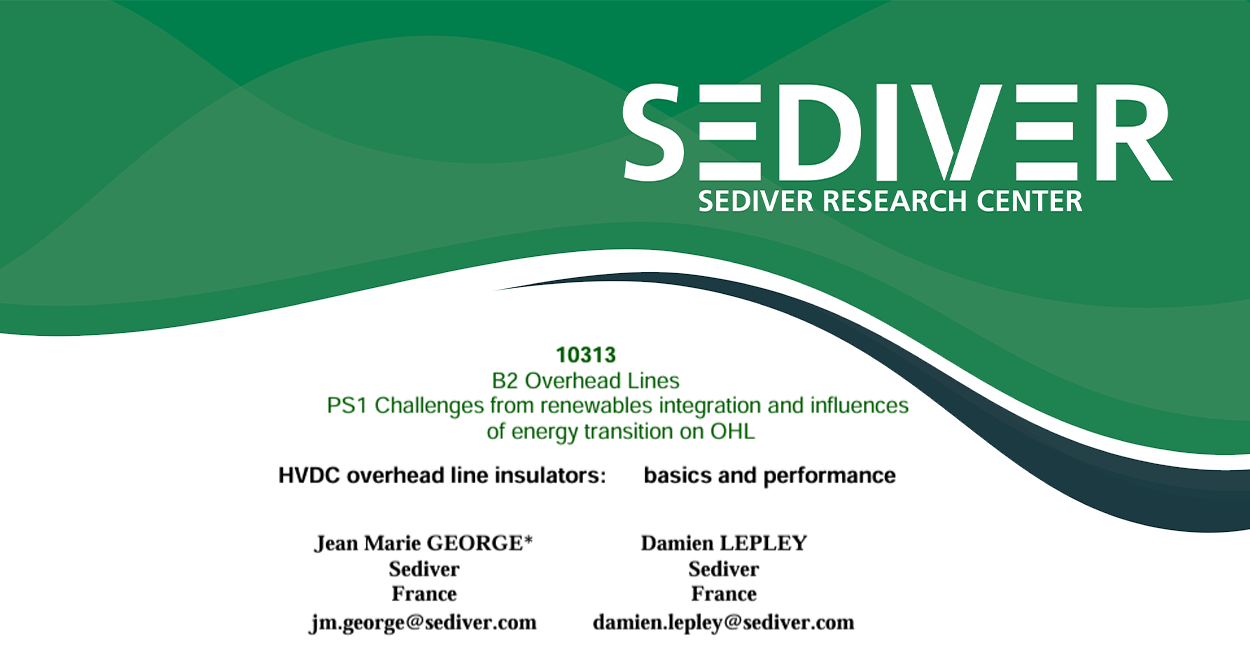Abstract:
The increase of energy demand and the progressive deeper impact of renewable energy in the global energy mix has triggered a strong interest in building new DC lines, upgrade older lines or convert AC to DC some existing segments taking advantage of existing rights of ways. This trend is consistent worldwide with projects going through a variety of environments and therefore with the need to design or adapt the insulation of the line with the most appropriate insulators.
IEC has established a long time ago a DC standard (IEC 61325) [1] which describes the technical requirements for DC overhead line insulators made of glass or porcelain dielectrics, but standardization bodies are still struggling with polymers for which some work is ongoing in CIGRE and IEC, often describing tests which are performed under AC stress and extrapolated to DC application, which by nature can be a challenge or seem inconsistent with the expected difference of performance when a DC voltage is applied. On the other hand, IEC 60815-4 [2] is a guide providing information related to the pollution performance and string design characteristics of insulators in DC stress conditions.
Several key aspects of DC insulator design will be re explained as it appears that some of the basics have been forgotten by some line engineers over the years. Among the main considerations some particularities of the end fittings and some geometrical aspects of the dielectric itself have been overlooked while relatively well described in the past and misapplications are possible today if these aspects are not clearly understood.
From a pollution point of view IEC 60815-4 [2] should be reviewed and the paper will present actual data to be compared with the theoretical approach described in the guide. The biggest gap between the mathematical model and reality is related to the calculation method of the USCD (Unified Specific Creepage distance) for a given pollution level. Consequently, strings will end up being longer with the model than needed resulting in possible higher costs of the towers.
A particular aspect of polluted insulators in DC in harsh environments is the benefit of a hydrophobic surface. For polymer insulators the ageing and erosion of the housing is a fundamental question for which there is no test today making consensus (ongoing work in CIGRE D1 72) [3]. For silicone coated glass or porcelain insulators the question is different given the absence of a fiberglass core which needs an absolute protection under the housing. Coating erosion and strength in DC has been evaluated especially for coated glass insulators and results will be presented.
Pollution performance in DC through artificial pollution tests with silicone coated insulators will also be discussed including the difficult aspect of producing an artificial heavy or very heavy layer. The transfer of hydrophobicity, which is the fundamental benefit of using hydrophobic surfaces for those thick layers can be a challenge in a laboratory and mostly the representativeness of the surface deposit when applied in one operation compared to the natural and progressive built up in service which will allow a progressive transfer over time.
To read more, please download the pdf of the technical paper
The information collected through this form are processed by SEDIVER, a simplified joint stock company, registered with the Nanterre Trade and Company register under number 542035761 and whose headquarter is located 7/9 allée de l’Arche 92400 Courbevoie for the purpose of allowing the download of our whitepaper documents and to send you information about our group’s companies and products. The legal basis for these processing activities is our legitimate interest to know who access and download our resources and to send them direct communication.
Fields marked with an asterisk (*) are required information. Should you fail to give this required information, you will not be able to download our whitepaper documents.
You have a right of access, rectification, erasure and limitation with regard to the processing of your personal data as well as the right to define guidelines regarding what happens to your data after your death and the right of portability of your personal data, to the extent applicable under local legislation. You also have a right to object to the receipt of marketing communication by ticking the dedicated box of this form, and at any time by clicking on the unsubscribe link placed in all our marketing communications.
To find out more about how we process your personal data and to exercise your rights, please refer to the SEVES group EU privacy policy and the SEDIVER privacy policy.
For more information, please consult our Privacy Policy.
 English
English

